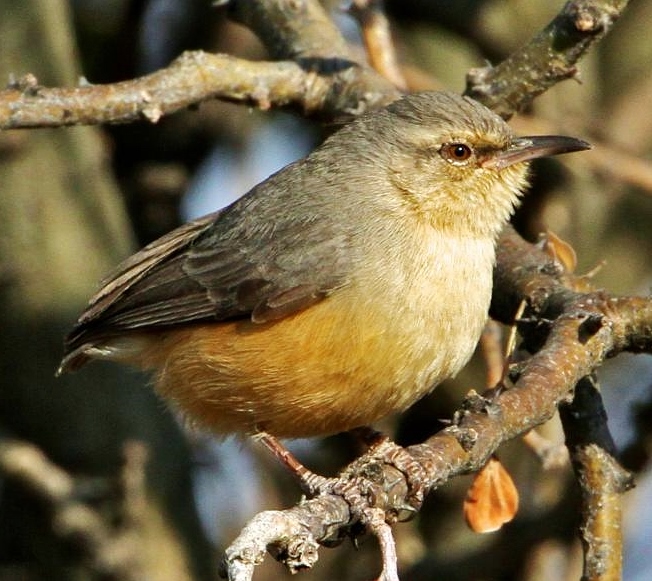 |
| Photo by Lee Hunter (Internet Bird Collection) |
Common name:
long-billed crombec (en); rabicurta-de-bico-comprido (pt); crombec à long bec (fr); sylvieta de pico largo (es); langschnabel-sylvietta (de)
Taxonomy:
Order Passeriformes
Family Sylviidae
Range:
This African species is found from eastern D.R. Congo, Angola and Zambia down to southern South Africa.
Size:
These birds are 12 cm long and weigh about 16 g.
Habitat:
The long-billed crombec is mostly found in dry savannas, but also in mixed woodlands with well-developed undergrowth, scrublands, rural gardens and near inland wetlands.
Diet:
They mainly eat invertebrates, such as termites, mantids, spiders, beetles, caterpillars and insect eggs, but supplement these with some seeds, fruits and Aloe nectar.
Breeding:
Long-billed crombecs breed in August-March. The nest is a bag-like cup of stringy plant fibres, leaves, grasses and spider webs, often decorated with leaves, rotten wood chips and lumps of spider web and lined with dry grass.It is typically strung from a droopy tree branch or in the depths of ascrub. There the female lays1-3 eggs, which are incubated by both parents for about 14 days. The chicks are fed by both parents and fledge 14 days after hatching, but only become fully independent 10 days later.
Conservation:
IUCN status – LC (Least Concern)
This species has a very large breeding range and is reported to be uncommon in the north of its range and common in the south. The population is suspected to be stable in the absence of evidence for any declines or substantial threats.







